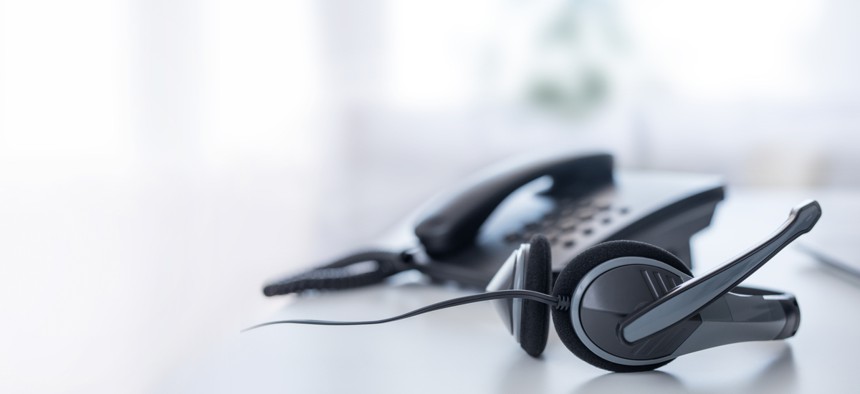Improving Citizen Experience in Government Call Centers

REDPIXEL.PL/Shutterstock.com
It doesn't have to be a long wait.
Is there a soul out there who relishes calling the government to deal with an issue? Whether you have a question for the IRS, are trying to book a campsite in a national park, want to ask about your Social Security benefits or need to help a loved one get care at a Veterans Affairs hospital, you pick up the phone prepared for a long wait and potentially several calls to complete the task at hand. But it doesn’t have to be this way.
In 2018, the Office of Management and Budget directed executive branch agencies to include consideration of citizen experience in their strategic decisions, culture and design of services. The private sector has long known that improving customer experience is crucial to success, but the government has lagged in this area and is only now beginning to prioritize this crucial component of efficiency and customer loyalty.
A key step to improving the customer experience in the phone channel is to first reduce friction resulting from the caller authentication process, which is often times the first barrier people meet when calling into an organization. Phone calls pose a challenge for government agencies because, like many large-scale commercial organizations, they often need to first accurately identify callers in order to provide assistance. That is the case if a citizen is calling the Centers for Medicare and Medicaid Services for help with a Medicare claim, or a taxpayer is calling the IRS about their refund status. But too many federal agencies attempt to identify these callers using knowledge-based authentication. The extensive use of KBA as a single authentication factor needs to go the way of the dodo. It is both time-consuming and insecure. Identification questions are too easily answered by fraudsters. Between the sheer number of data breaches that have occurred over the past decade and the vast amounts of personal information we readily provide on social media, it is likely a fraudster has everything they need to fool call center agents into divulging sensitive information. Using KBA puts citizen information (such as health care records) and money (such as tax refunds) at risk.
Agencies can take some simple steps to reduce their reliance on KBA. First, agencies should link calling phone numbers to the unique devices citizens use to call. Once citizens are linked to the phones they use, the calling phone can help identify them. Second, incoming phone calls must be validated to ensure that the claimed phone number is accurate and that it has not been spoofed or hacked by a caller trying to impersonate someone else. With this new authentication and identification approach in place, agencies can reduce the use of personal information in identifying citizen callers. As an extra step in improving the citizen experience, agencies with high rates of repeat callers should consider adding a voice-bio authentication system.
In addition to better protecting citizen accounts, modernized authentication methods will reduce the time spent interrogating callers, which will improve average handle times and lead to happier, better-served customers. And since average hold time is a common key performance indicator for agencies, improvements in this area will be immediately reflected in agency scorecards. Spending less time on identity interrogation will also make the call center agent experience better, leading to less turnover and thus more experienced call center staff. For agencies with interactive voice response systems, reducing the role of KBA in such systems will lead to greater levels of self-service, allowing agents to focus their time on more complex topics and provide faster answers to caller questions.
Shortened hold times, improved call handling, reduced fraud and improved citizen experience all are steps toward improving government in a way that is visible to constituents.
Patrick Cox is a senior vice president and general manager of product Management for TRUSTID at Neustar, Inc.


